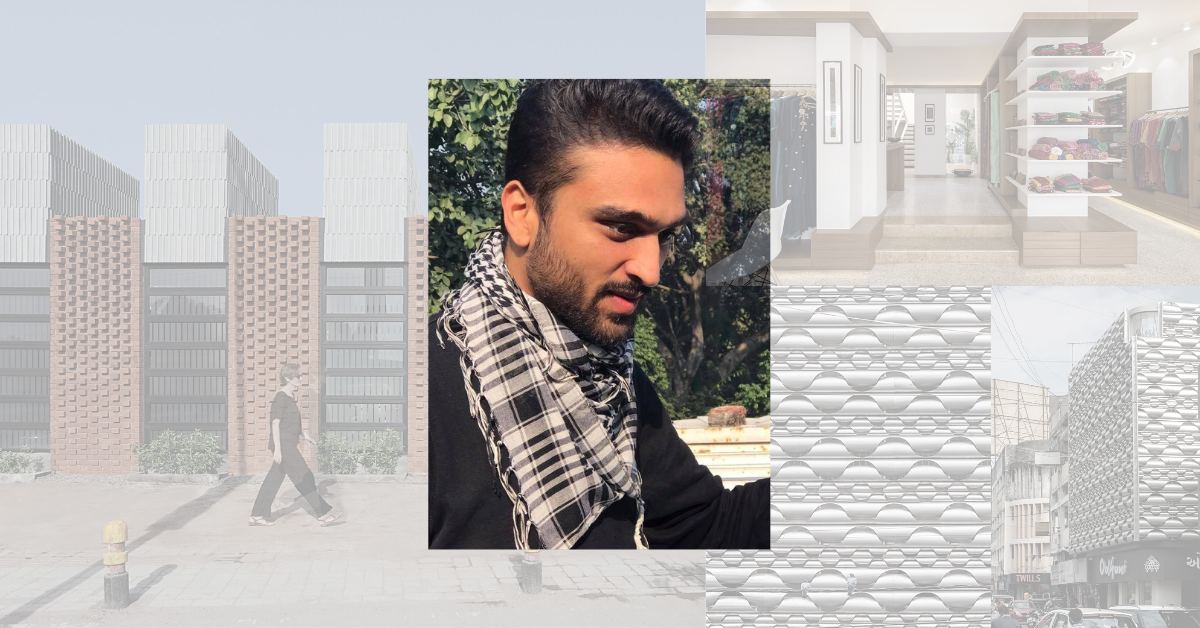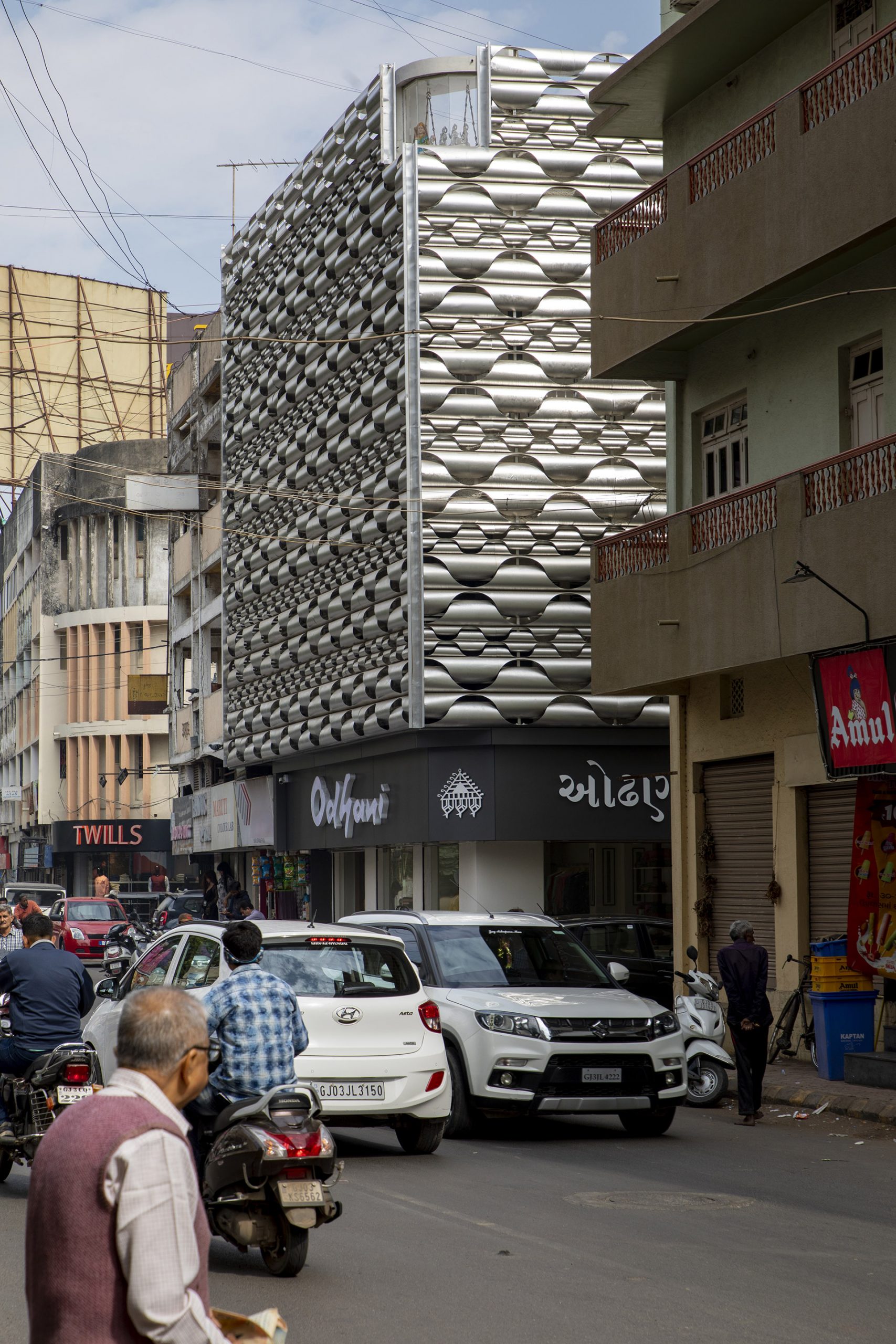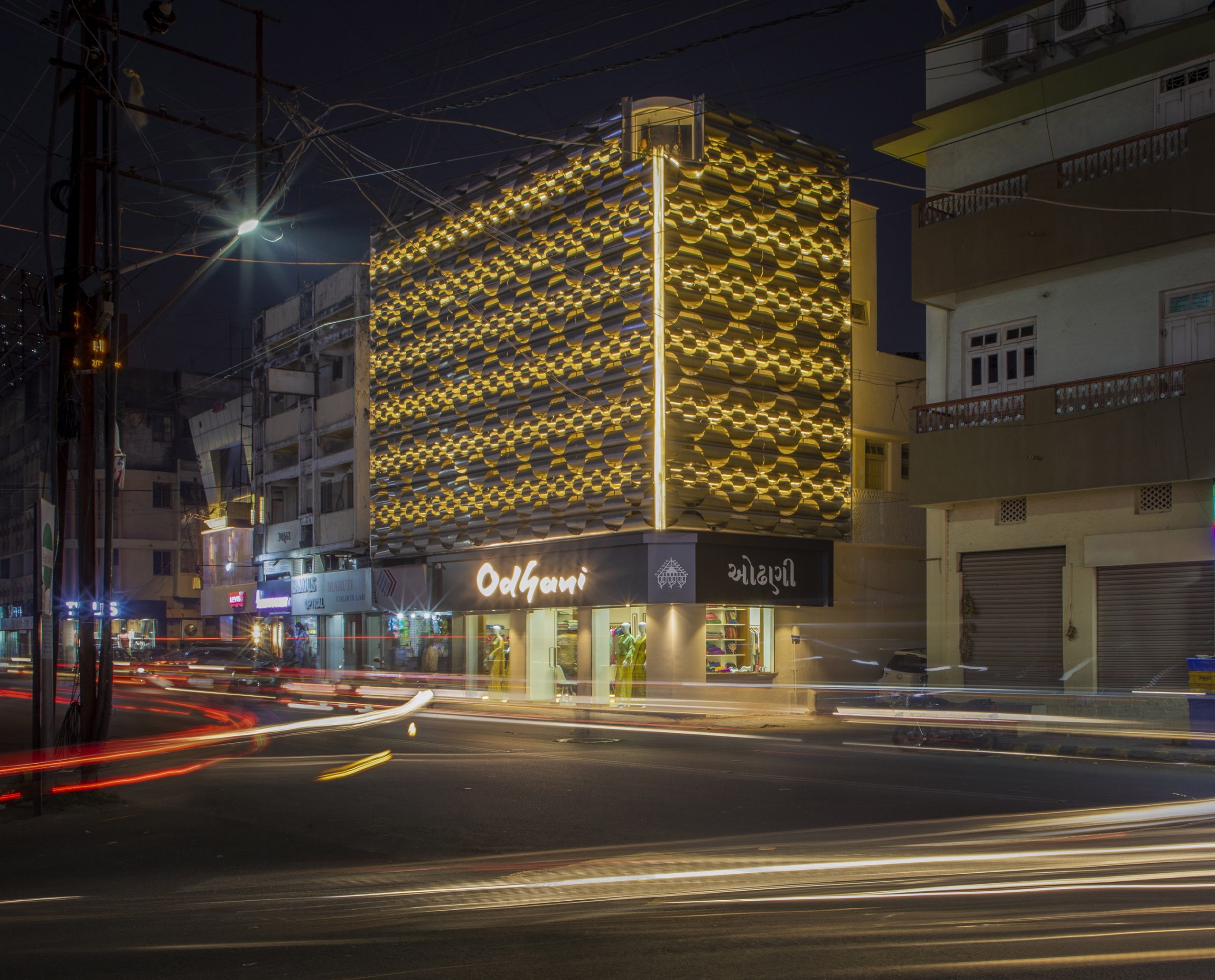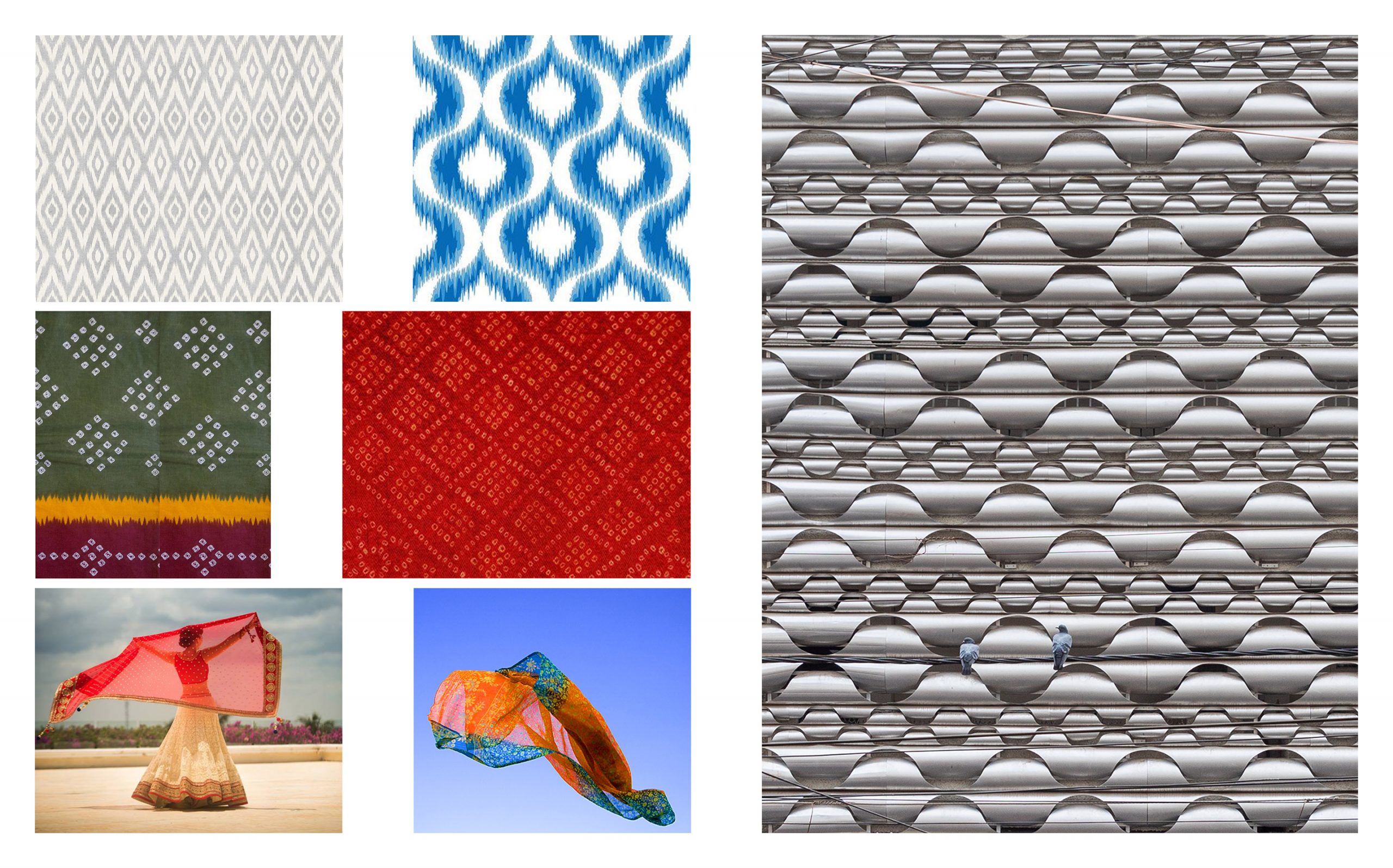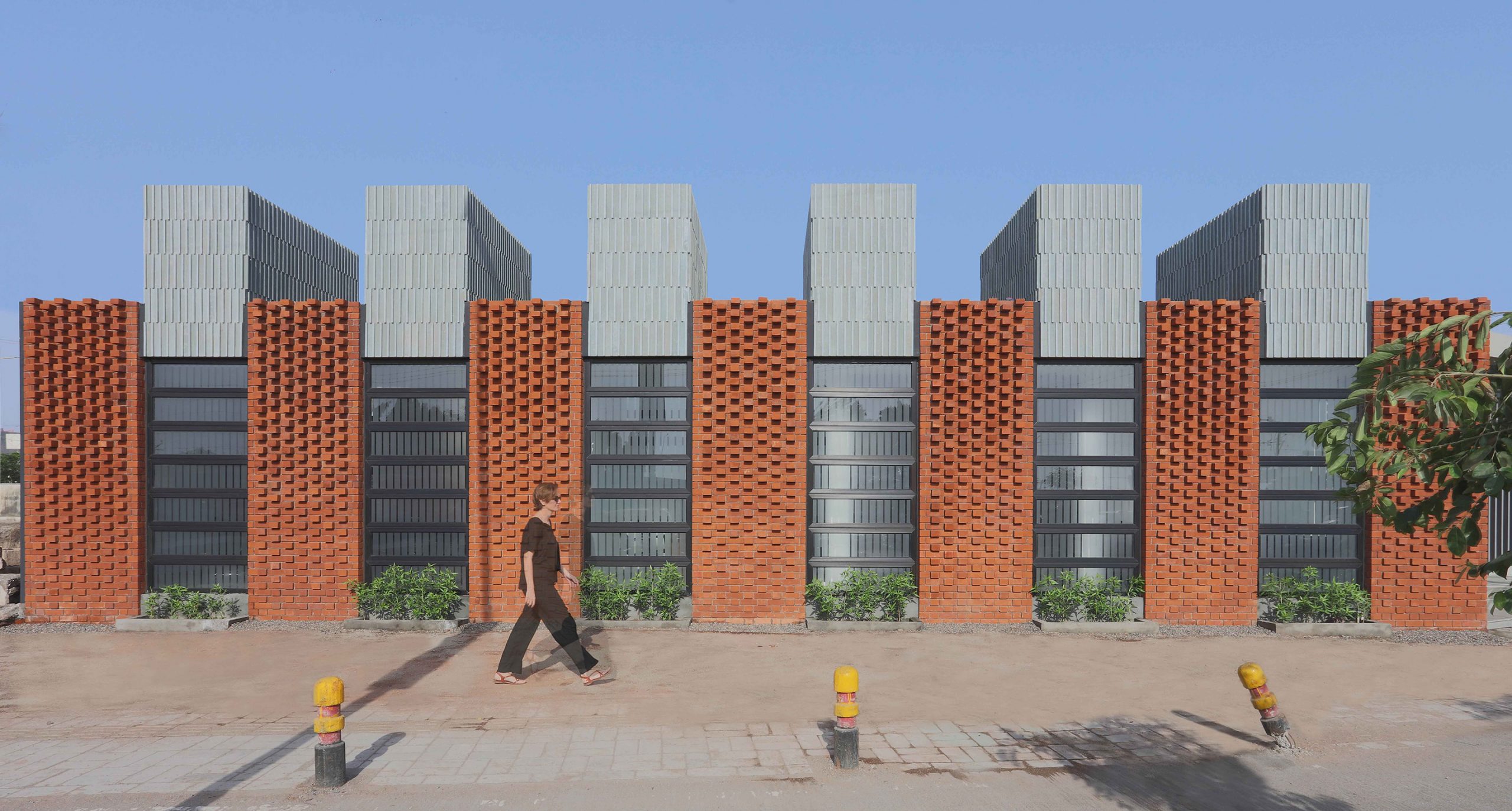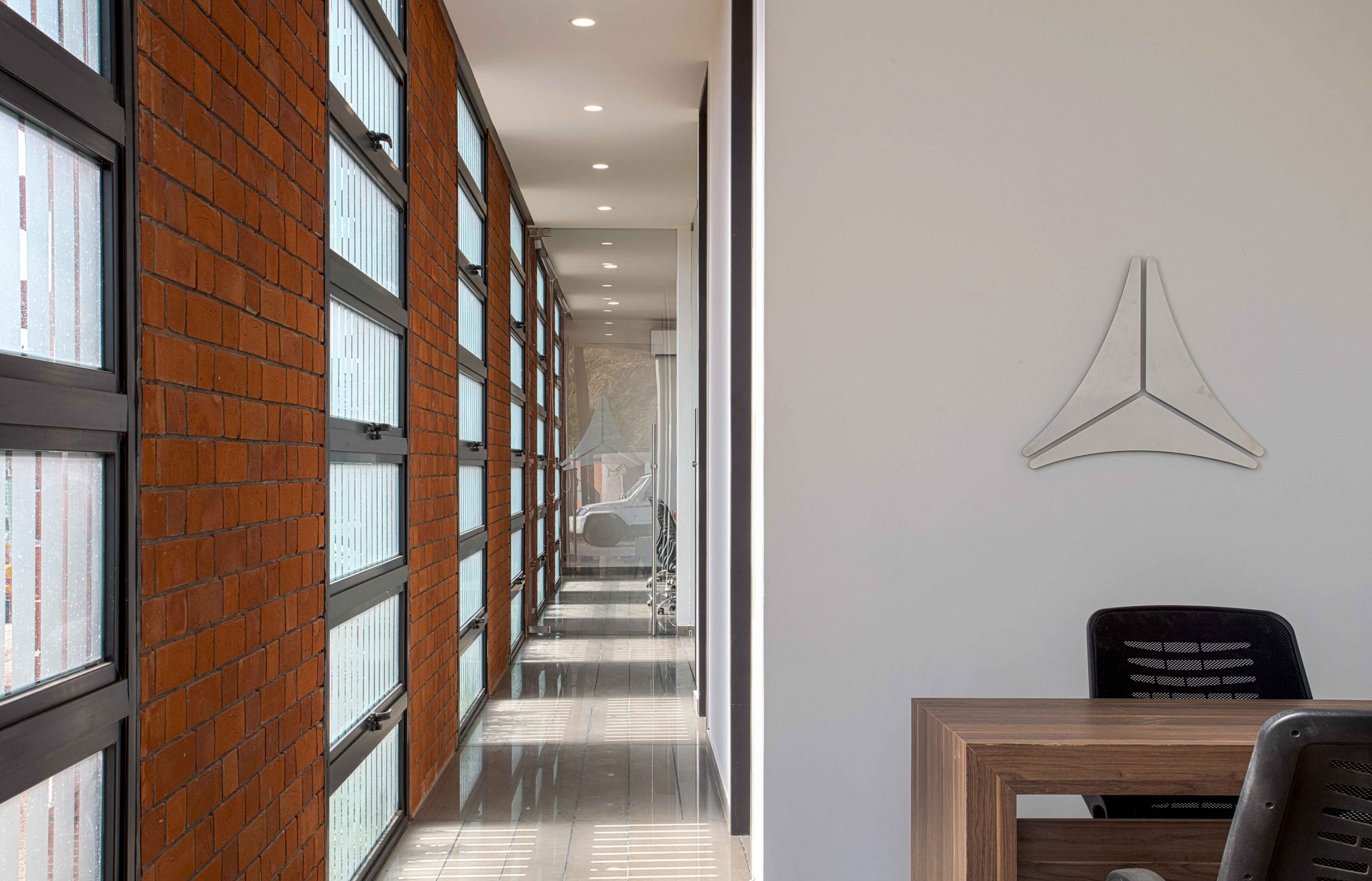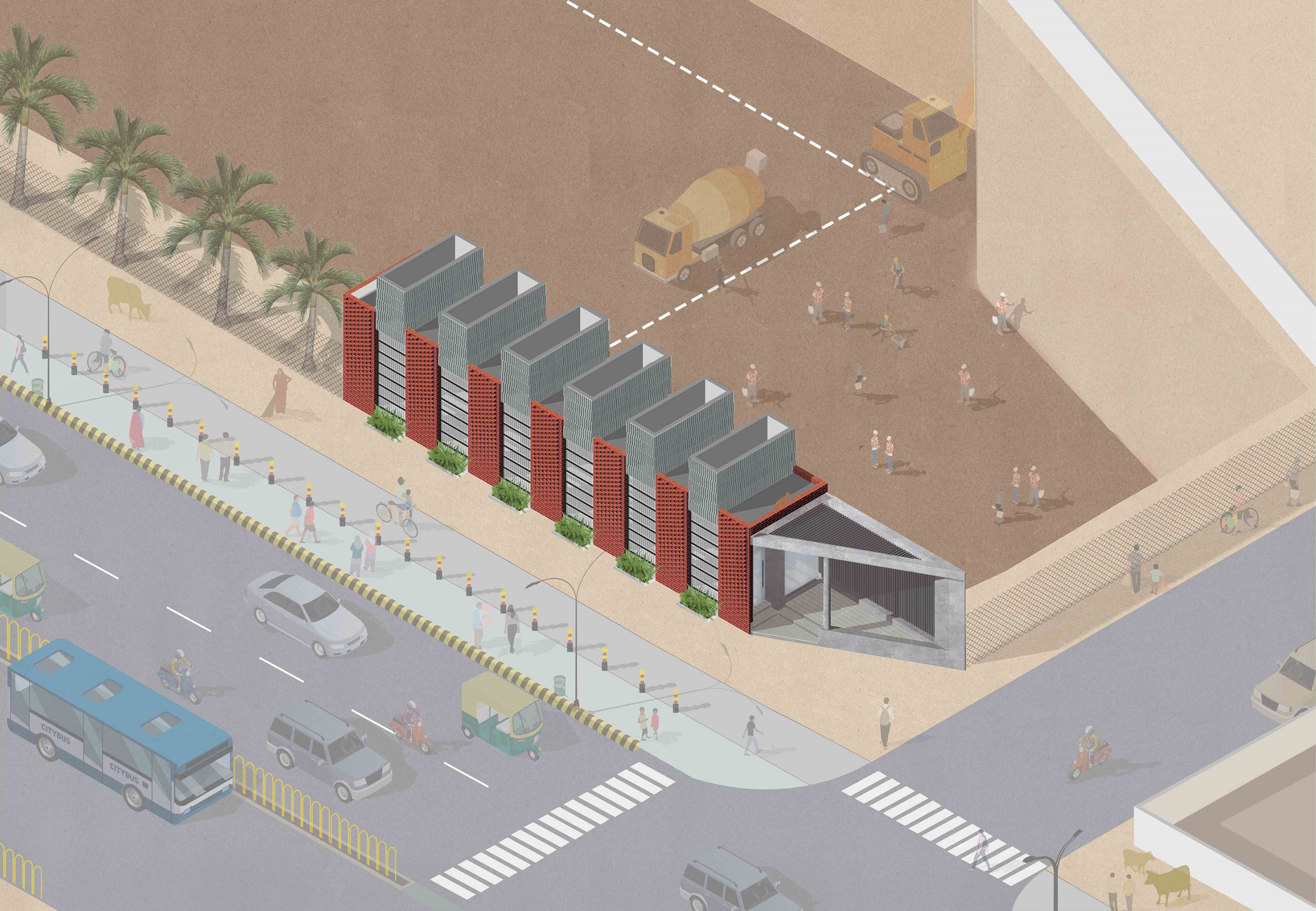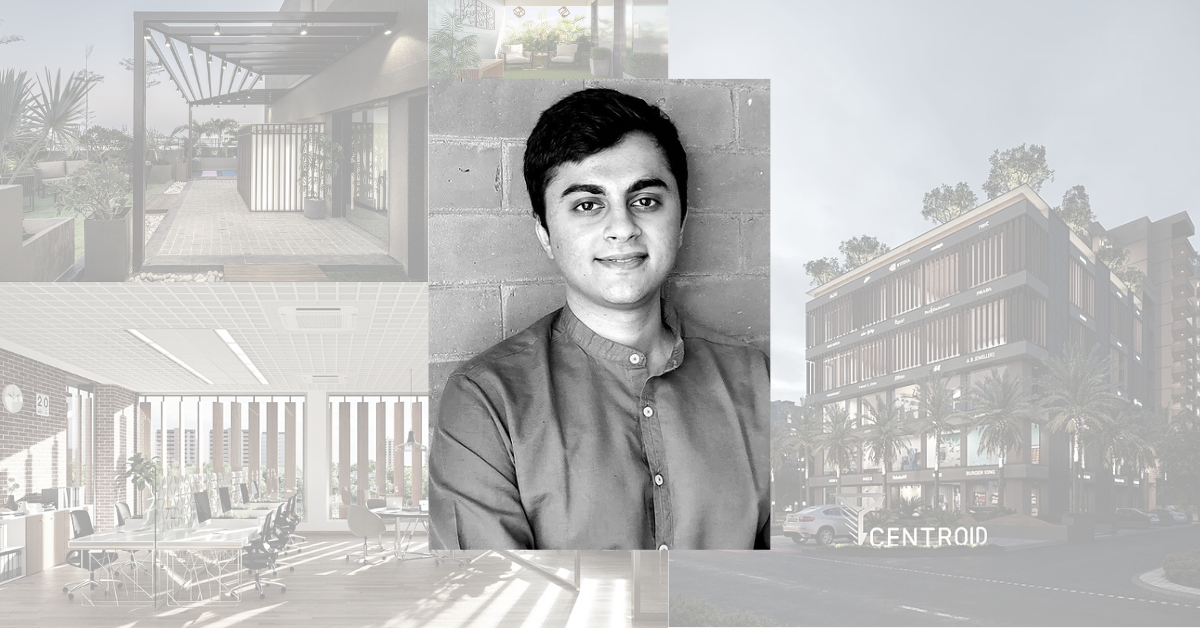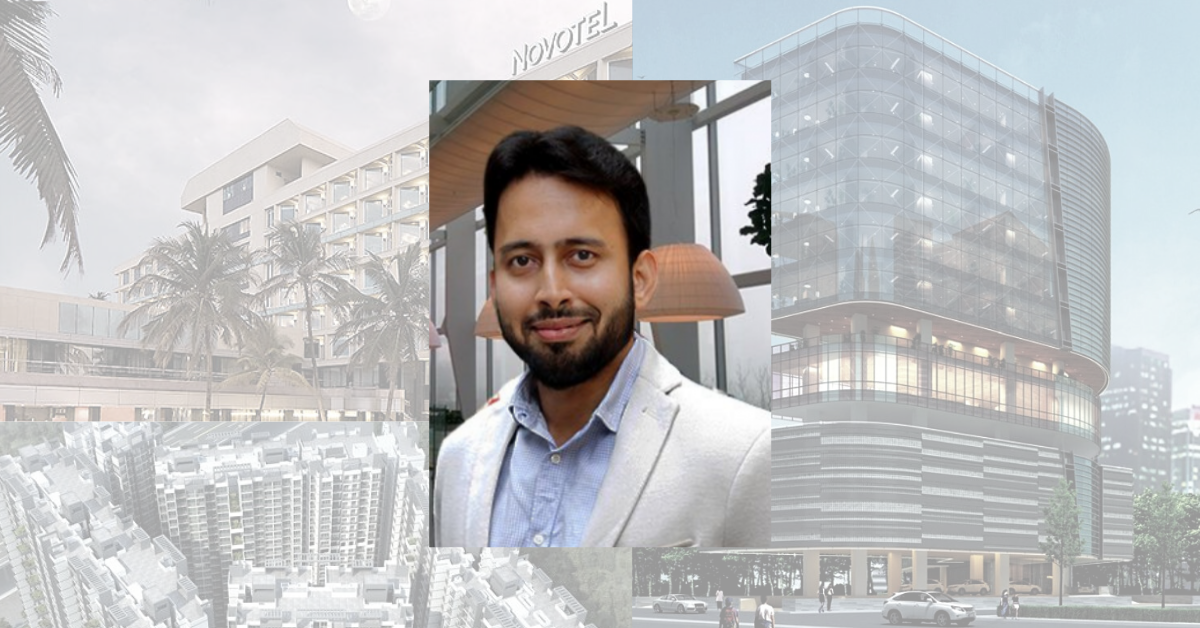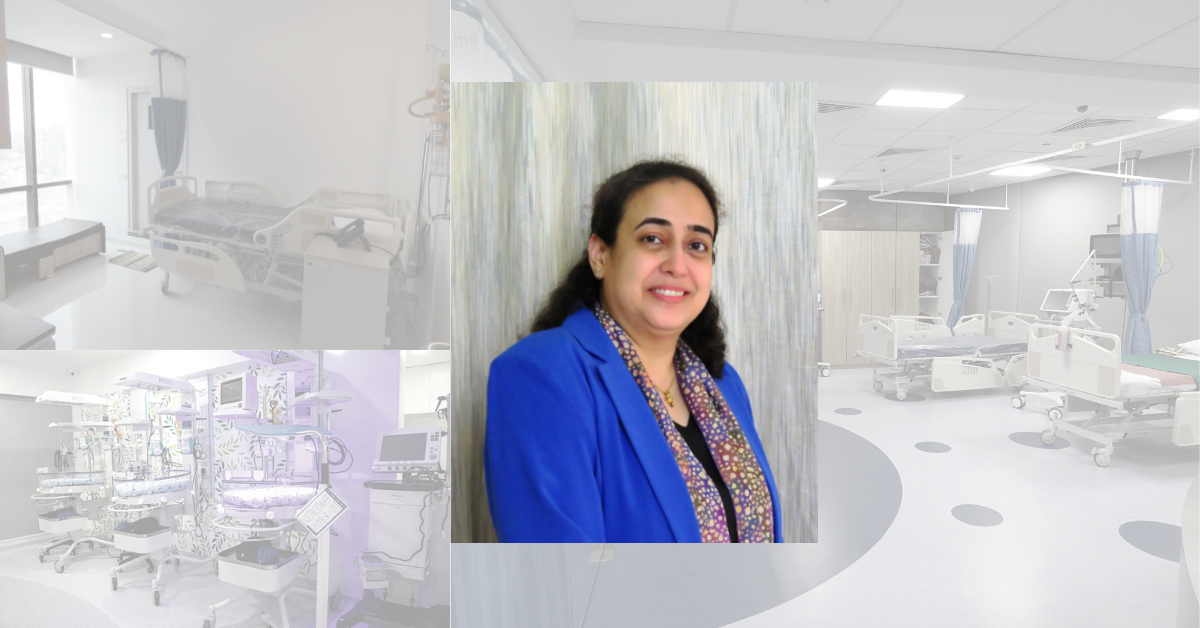Rajkot-based Playball Studio is a young practice lead by Ronak Gangdev that undertakes diverse scale and range of work that varies from product design to pavillions to working for social causes. It is every practitioner’s dream to create diverse work that involves experimentation, community work and viable commercials. But navigating these aspirations is often a challenge. Maintaining a balance between good design and economical viability is a grey-area for many practices. Ronak speaks about navigating these realms within his practice and contributing to the welfare of not only design and society but also towards the vocation.
The work palette of Playball Studio oscillates across micro to macro scales. Established in 2017, Ronak cites, “On one hand we were doing a small renovation project while on the other hand we were preparing our pitch for the 13-storey high commercial project.” But projects of varied typologies help him put his learnings in perspective. “For example, I can be designing the door handle for a residential project with limited resources but at the same time, I can simultaneously be thinking of how this learning can be translated to the overall strategy of another project having no restrictions with resources. I strongly believe that the output gets mundane and repetitive if an architect decides to stick to a single typology of projects,” signifies Ronak.
This outlook is by virtue of working with industry stalwarts like Rajesh Renganathan & Iype Chacko (Flying Elephant Studio, Bengaluru) and Stephane Paumier (S.P.A. Design Pvt. Ltd., Delhi). It enabled him to look at the larger picture but also focus on minute details. But having worked in metro cities, establishing a practice in a tier-2 city like Rajkot proved daunting. “Clients assume that architects are just concerned with aesthetics. And the responsibility of educating clients about the impact of good design over the built and spatial quality of their project, falls upon the architect themselves.”
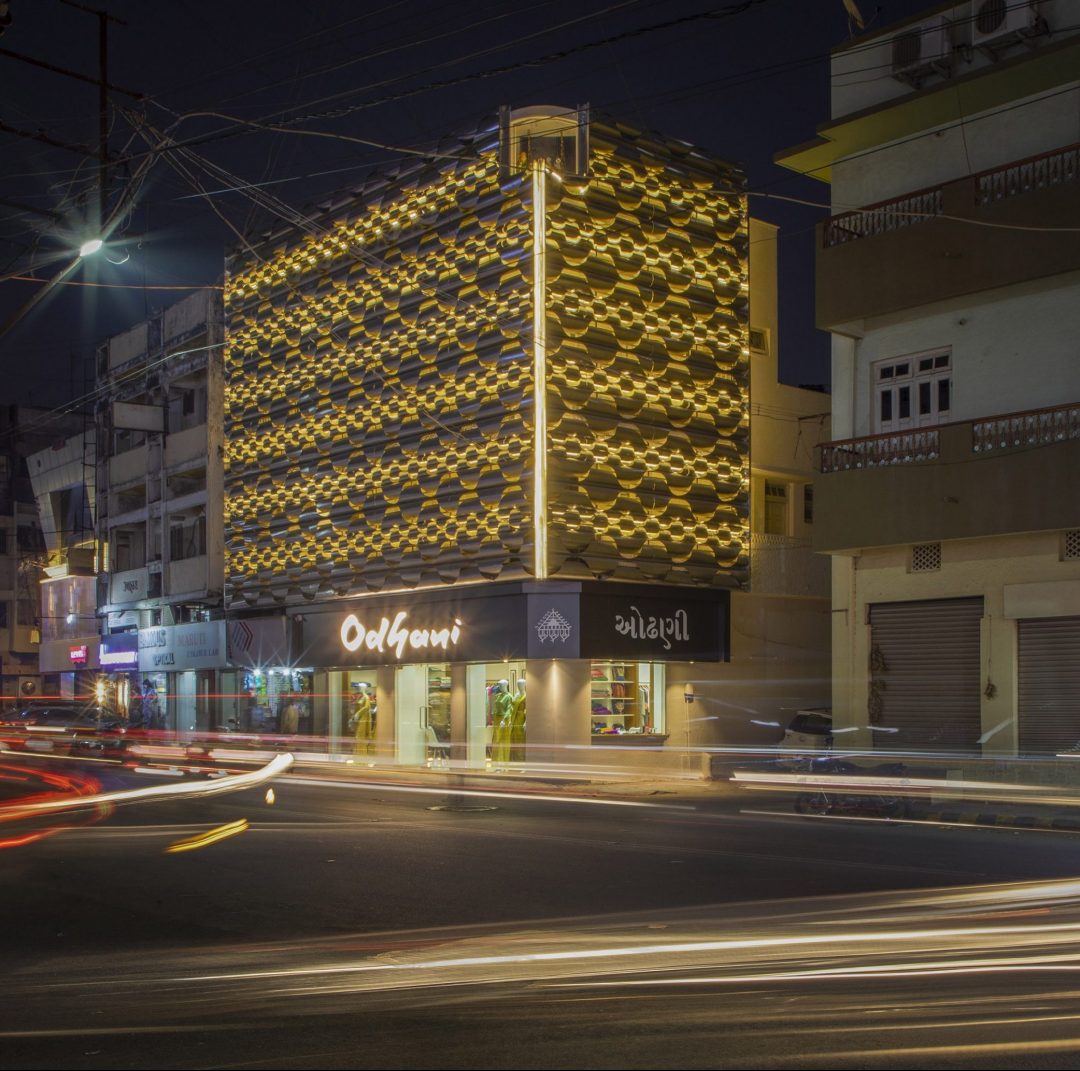
The 29-year old architect gravitates towards overlapping cutting-edge technology with traditional building knowledge.
The roles and responsibilities of the architect does not cease at educating clients. Ronak’s practice in a tier-2 city paved his way towards the social development of the region. He says, “Quality of built environments is integral to achieve social development. I am constantly seeking clients or patrons who share this vision of giving back for the betterment of society.” Playball Studio currently works for a Spain-based foundation who supports a few NGO in India. Working in the Santhal tribal area of Jharkhand, he mentions, “Some women in the region impart skill-based training to the tribal women. They require a larger community centre where these activities can be carried out efficiently. Upon visiting the site and understanding the functional nature of their activities, I travelled around the region to understand the local building skills. I discovered beautiful local houses made in mud and thatch with the traditional knowledge that has been passed on from generations.”
The 29-year old architect gravitates towards overlapping cutting-edge technology with traditional building knowledge. “Rural India harbours centuries-old traditional crafts and techniques. I documented these techniques with the proposal that the community centre should imbibe the same. This will create a sense of belonging for the locals. We are devising models where the locals can partake in the building process.”
Often these projects transpire at the cost of architects not making profits. The common belief is that social work should be charitable. But, in an ideal world, perhaps philanthropy should also be profitable and lucrative. Ronak holds the need for the government, foundations and NGOs which focus on improving the built-environment quality to work with architects as equal stakeholders. “It is wishful thinking to have the Government of India develop a ministry that works for the betterment of the built environment quality for its tax paying citizens!”

There’s research, experimentation and often, failures, those transpire during the project’s course from conception to conclusion. And in the process, new learnings are generated.
But closer to home, he also cites the problem of architects not being paid appropriately. He explains, “COA has identified the percentage of fees for projects of various scales in their handbook of professional documents. But I wonder if most architects are aware of it, let alone clients. Our fees range from working for free to INR 1000/- per square feet (and even beyond in some cases). There is no minimum/maximum cap for fees or salaries. Some of my contemporaries do amazing socially relevant projects but do not make any profit out of them.” Impressing upon the difficulty , he says, “I heard a stand-up comic say once, “One for the heart, two for the kitchen” and for young architects in India, it is “One for the heart means at least five for the kitchen to keep the practice running”.
It must also be emphasized that whatever be the scale, intent or budget of a project, every project starts from scratch for an architect. There’s research, experimentation and often, failures, those transpire during the project’s course from conception to conclusion. And in the process, new learnings are generated.
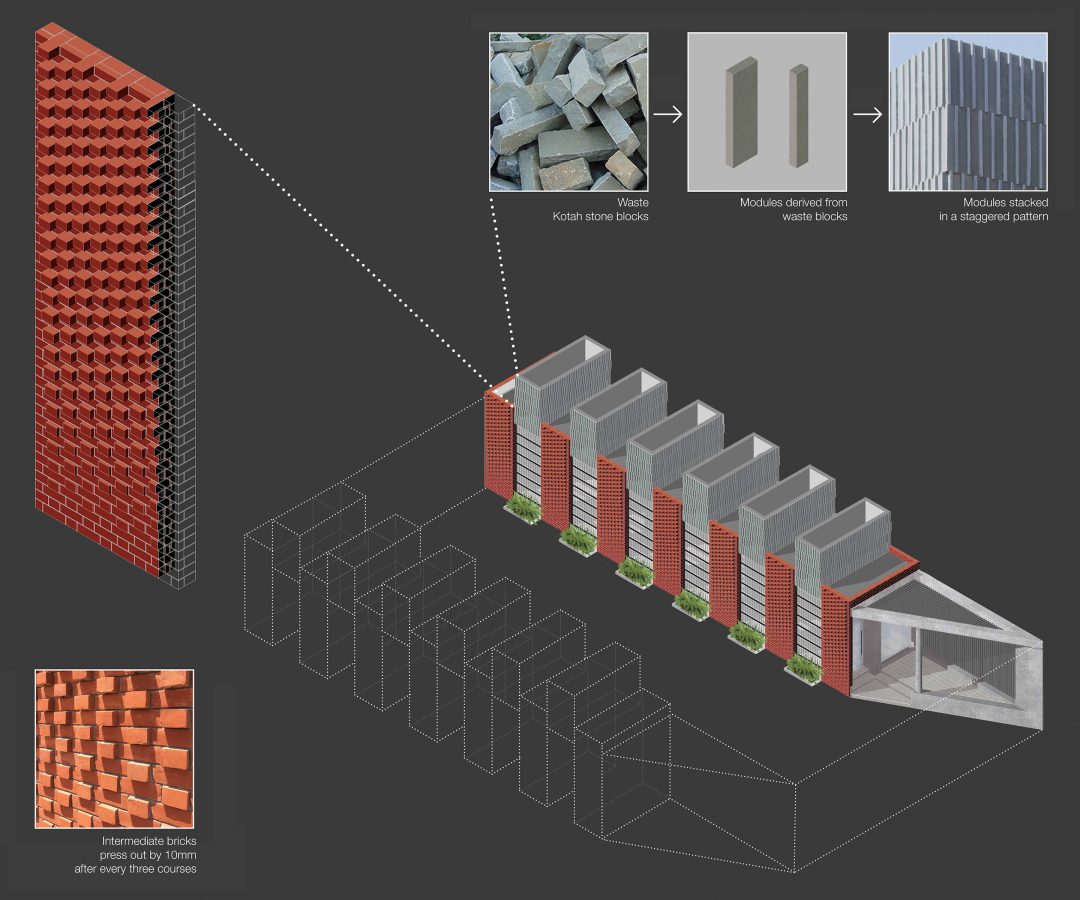
“For me technology is hands-on that involves applying a set of skills to develop something.”
Recounting an adaptive reuse project, he says, “We had to expand a nearly 50-year old non-descript bungalow for a designer’s boutique. We decided to cover it up with a veil-like facade emblematic of the designer’s brand name, ‘Odhani’.” After initial failed mock-ups, they stopped making drawings and worked directly at site. Through a process of trial and error, they stumbled upon a complex-looking solution which in reality is simple, light and with zero wastage. “People think that technology is a white-collar thing, developed via complex machines and computers. But for me technology is hands-on that involves applying a set of skills to develop something.”
Talking about future trajectories for his young practice, he explains, “We have started to move to a model where a single window team of architects, designers, engineers, carpenters, masons, etc. will work in tandem from the first day of conceptualization of a project.” He is inspired by Bijoy Jain (Studio Mumbai) who has a similar model of working. He sums up saying, “I strongly believe that good architecture can never be produced just by being on the drafting board; it is high time that we too get our hands dirty!”
Playball Studio
Website: playballstudio.com
E-mail: playballstudio@gmail.com
Biltrax Construction Data is tracking 11000+ projects on its technology platform for its Clients. Email contact@biltrax.com to subscribe and generate business leads.




